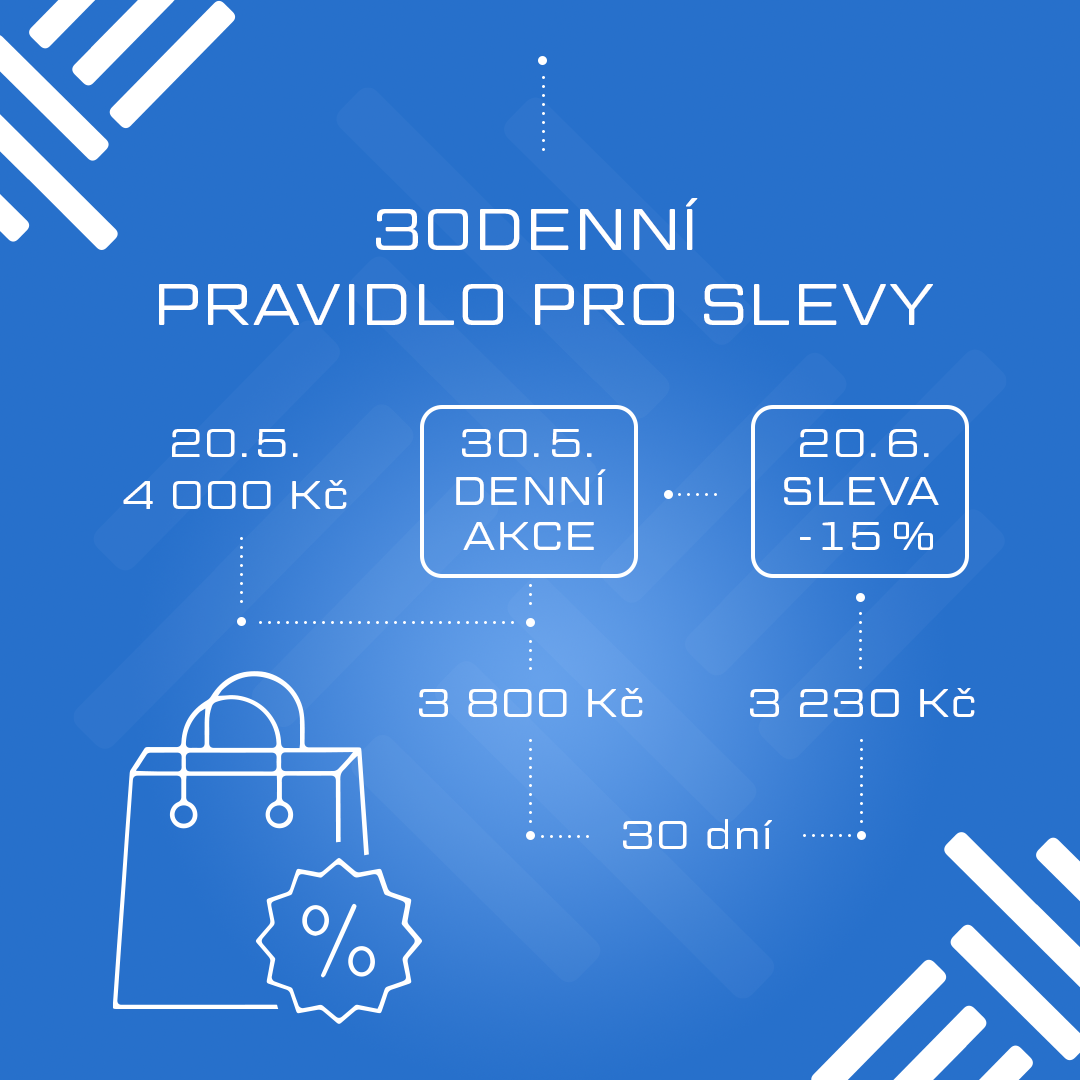Button amendment

What does the „Button amendment„ effective from 6th January 2023 bring? How does it affect discounts, reviews, claims and other?
You have probably already heard of the term “Button amendment”. What does it include and what to watch out for? Let’s summarize it in the following article.
Discounts
Have you ever bought something in a great discount, which you retrospectively found out was not so advantageous and on the contrary, you even overpaid? Some e-shops deceived their customers with discount that was never really a discount. That is over now. The amendment brings 30day discount rule..
How does it work? If e-shop wants to give any discount on a certain product, it must be calculated from the lowest price the product had been sold in last 30 days before this discount.

30 DAY DISCOUNT RULE
What are the exceptions from this rule? Perishable goods, services, and intangible products.
Which marketing tools are not covered? Customer loyalty programs, 2+1for free, individual offers etc.
What sanctions might the e-shop face? Sanctions from the Czech Trade Inspection Authority or the option for the consumer to withdraw from the contract within 90 days.
* Same rule applies to regular stores as well. On price tags with discounts will have to be marked the previous lowest price in the last 30 days.
Reviews
Do you belong among the people who care about reviews? In today’s world it is already a formality and you are surely aware, that negative review can influence your purchase process. Although, are all negative reviews true? Are they always written by real customers?
With the amendment comes the rule – if the seller wants to publish reviews on their socials, marketing materials or website, it must be verified. In case the reviews are not verified, the seller has to notify the customers that the reviews are not verified. This rule applies also to price comparators, online markets, and special offers / secondhand portals.
How does it work? On each platform the seller must present the way they handle the reviews (in terms and conditions or on a website subpage). They must publish the way they verify the reviews and describe the process. Also, they must indicate how they calculate the average rating (number of likes / stars / points). The seller should also provide information how they select positive and negative reviews to be published Intentional deleting of negative reviews might be considered an unfair practice.
How to verify the reviews? One of the options is to send the customer e-mail with link after buying the product together with the order confirmation. Via this link the customer may write the review. Another option is to create a review when the user is logged in to their user account.
Claims
Until recently, if e-shop delivered product that showed defect in the first half a year, from the complaints point of view, the e-shop was obliged to repair / replace the product – unless it was proven that the defect was caused by the customer. The current amendment changes the half a year to one year.
Purchase process
During the purchase process the seller has to notify the customer about any limitations of the e-shop (e. g. they don’t deliver to certain country), at the latest when the customer puts the goods in the cart. The customer must be informed and agree with the price adjustments based on profiling before the they purchase the product. Before the customer reaches the end of purchase process, the seller must clearly inform about the product characteristics, final price and transport fee. The seller should ask the customer to check the shopping cart before finishing the order
E-shops also must not automatically add other products / accessories to the customers’ cart when summarizing the order and must not automatically tick the checkbox.

„Button amendment “
In other words, Order obligating to payment – this or similar wording should be on the button, through which the customer confirms their order. Contractual purchase processes must comply with the order button.
Validity of the purchase processes is acquired in 2 ways:
1. 1. Contract is concluded after creating the order by customer and subsequent confirmation from the e-shop.
2. 2. Contract is concluded immediately after purchasing the product and both parties are mutually obliged.
The seller is also obliged to send you terms and conditions in a written form, ideally in PDF format to your e-mail, together with order confirmation.
*Only link is no longer sufficient, as the seller could change the terms and conditions over the time without the customer’s knowledge.




.png)








